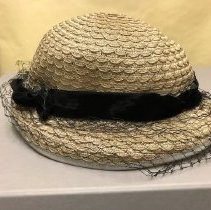Objects
Enter a word or phrase to perform a general search across all records in the Objects catalog. You can also browse records in the catalog without performing a search.
Search Tips
- Searches are not case sensitive.
- Searching for multiple words connects them with OR by default. Matching records can contain any of the words.
- Connect multiple words with AND if you only want to see records containing both words.
- Use quotation marks to search for a phrase.
- Place an asterisk (*) at the end of a word as a wildcard.
251 results found. Records searched: 251
-
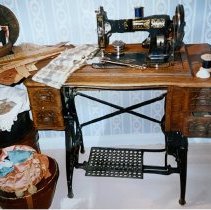
-
1986.33.1 - Metal, width expanded 11", height 9 1/2", cutting disc 2 1/2" X 2 1/2" Found in house at 375 4th Street by Shirley Ashworth, no marking on the pastry cutter except "Pat Appl. for". Five blades - adjustable.
Blender, Pastry
Record Type: Object
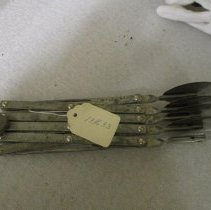
-
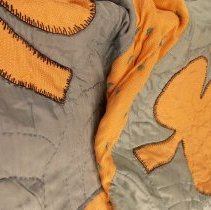
-
1986.56.22 - Recipe card holder in the shape of a rooster with a clothespin for holding the card. Card reads,"This rooster will keep your recipe card neat while you're cooking good things to eat. Wood, wire, felt. 7 1/4" tall on 2 1/2" x 3 1/4" base.
Holder, Clothespin
Record Type: Object
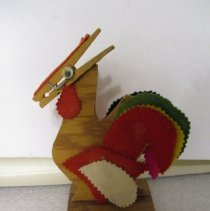
-
1986.56.38 - Cast iron toy stove with firebox door and ash door. 12" tall, 6" deep, 8 1/2" width. One lid missing.
Kitchen items
Record Type: Object
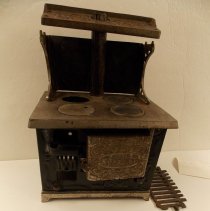
-
1986.56.46 - Eighteen asafetida tablets in a brown glass bottle. Eli Lilly and Co. No.197 Chocolate Colored Tablets Asafetida 5 grs. Green label. "Usual Adult Dose- 1 tablet three or four times daily, or as directed by the physician."
Bottle, Medicine
Record Type: Object
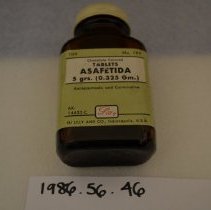
-
1986.56.51 - Tin, 9 " diameter, 1 2/8" depth. Has small rim around pan. Circa 1920
Pan, Cake
Record Type: Object
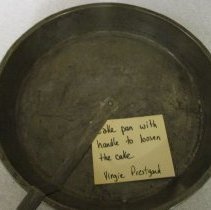
-
1986.65.1 - 10 1/4 " (26.5 cm), basket of flowers on head, black face, arms, legs, print blouse of red & blue flowers, striped blue & yellow (white) skirt, white apron with JAMAICA printed on it, loop earrings sewn on
Doll
Record Type: Object
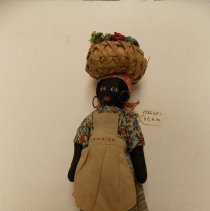
-
1986.65.2 - 10 1/2" 26.5 cm, brown face, hands, carries a woven basket (8.5cm) pink dress, apron, scarf & bandana of yellow & black plaid, woven shoes. Handmade, stuffed, cotton, woven grass
Doll
Record Type: Object
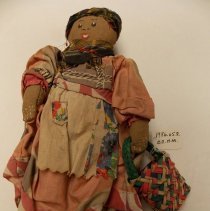
-
1986.65.3 - Cotton, brocade dress, 10 " (26 cm), cotton body, wig of blonde hair, braided over ear, white necklace & earrings, shune of brown net, underpant, net stockings, blue floral placed at waist holding shune in place
Doll
Record Type: Object
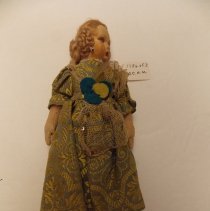
-
1986.74.1.a,b,c - Screw beans. a: 3 1/2" tall with 4 brown spiral seeds. b: 3 1/2" tall with 11brown spiral seeds. c: 3 1/2" tall with 9 black spiral seeds.
Seed
Record Type: Object
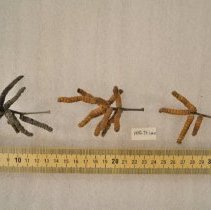
-
1986.74.2.a-e - Five mesquite beans with seeds used by indigenous people for food. Pods range in size from 3 to 4 1/2" and are filled with wheat-colored seeds.
Seed
Record Type: Object
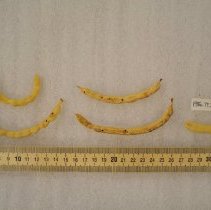
-
1986.77.3.D - Wood, Waffle Pattern, Solid, 12 3/4", 8 1/2 " circum. , 3 1/4" Handles, Circa 1920
Pin, Rolling
Record Type: Object
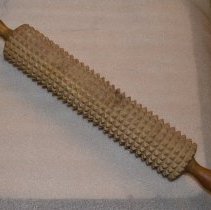
-
1986.78.2 - Circa 1884, Cotton, Off-white color Fringe - 3 1/2" around edges 30" x 32" (81 x 76 cm) Crochet, ecru color of cotton thread; has bonneville high school mascot and date 1984
Scarf, Table
Record Type: Object
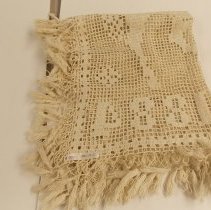
-
1986.80.6 - Metal, silverplate 7" x 1 1/2". Large silverplate tablespoon, diamond design on end of handle, "Senate Silverplate" stamped on back Spoon found inside washing machine (1986.80.1)
Spoon
Record Type: Object
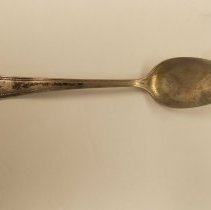
-
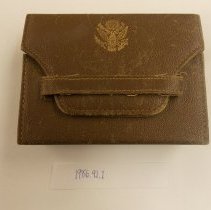
-
1986.95.19 - White cotton, 13 3/4" length, 21 " width, 4 1/2" x 3 1/2" block of lace sewn on front overlap, machine sewn. 1/4" lace trim around flap. From the Kenneth William Taylor Ranch, Grouse, Idaho. (Do not know the use of article)
Bag, Garment
Record Type: Object
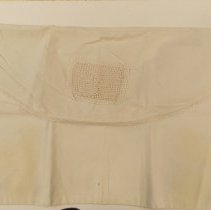
-
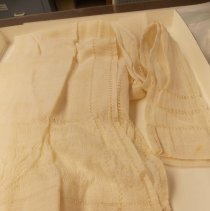
-
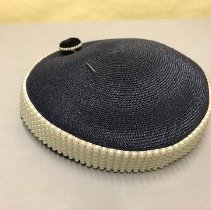
-
